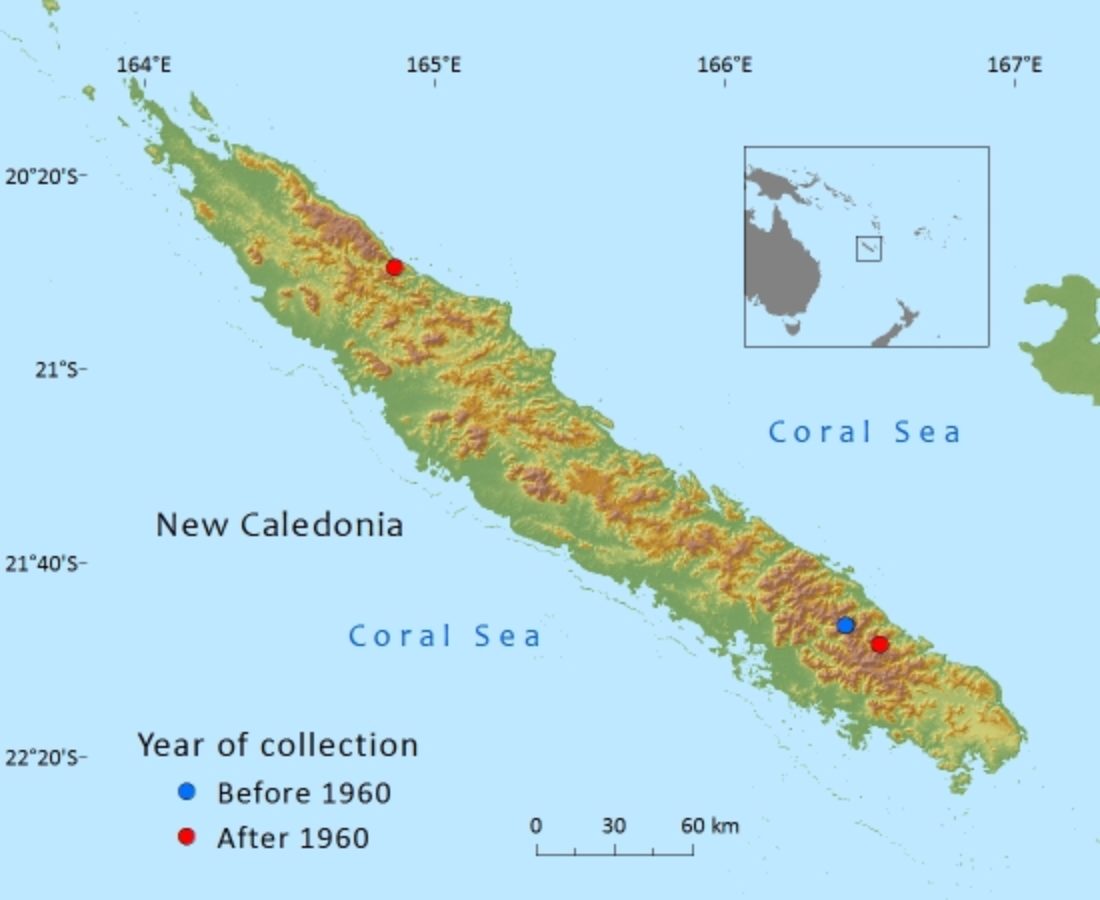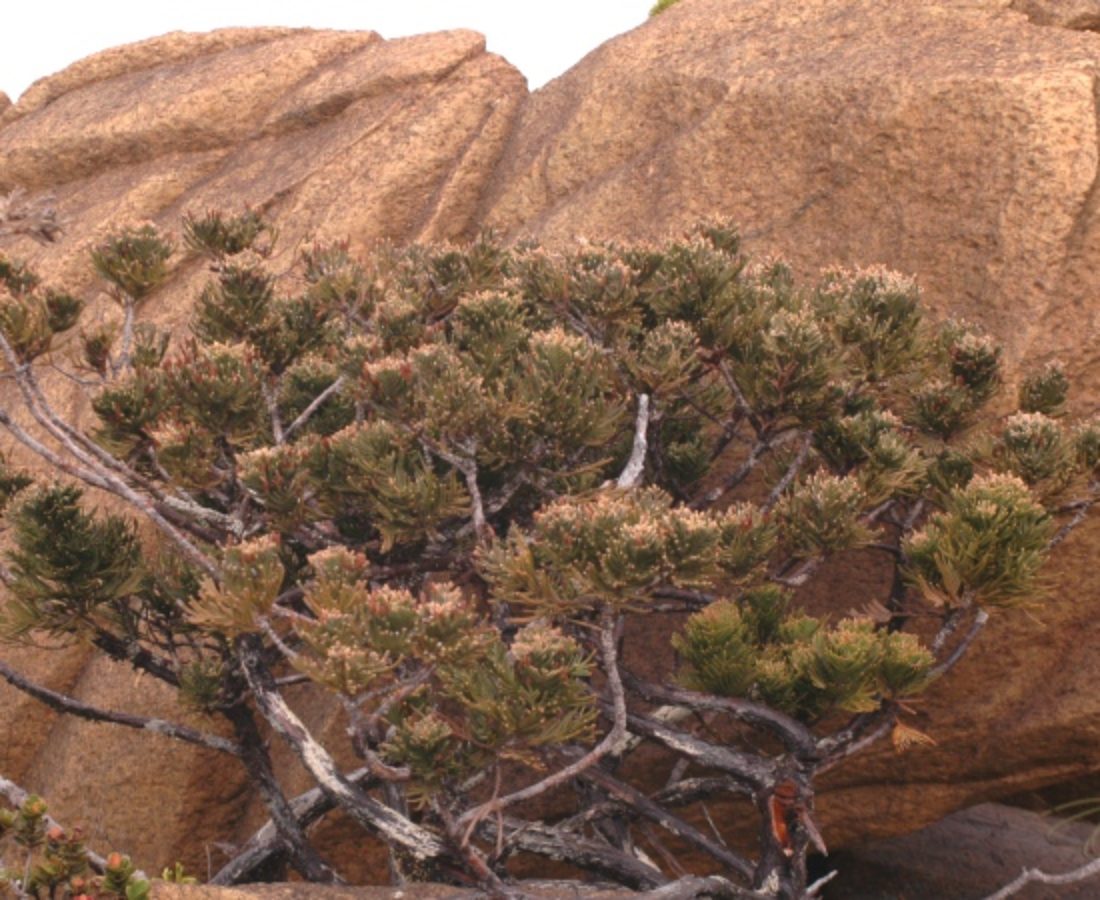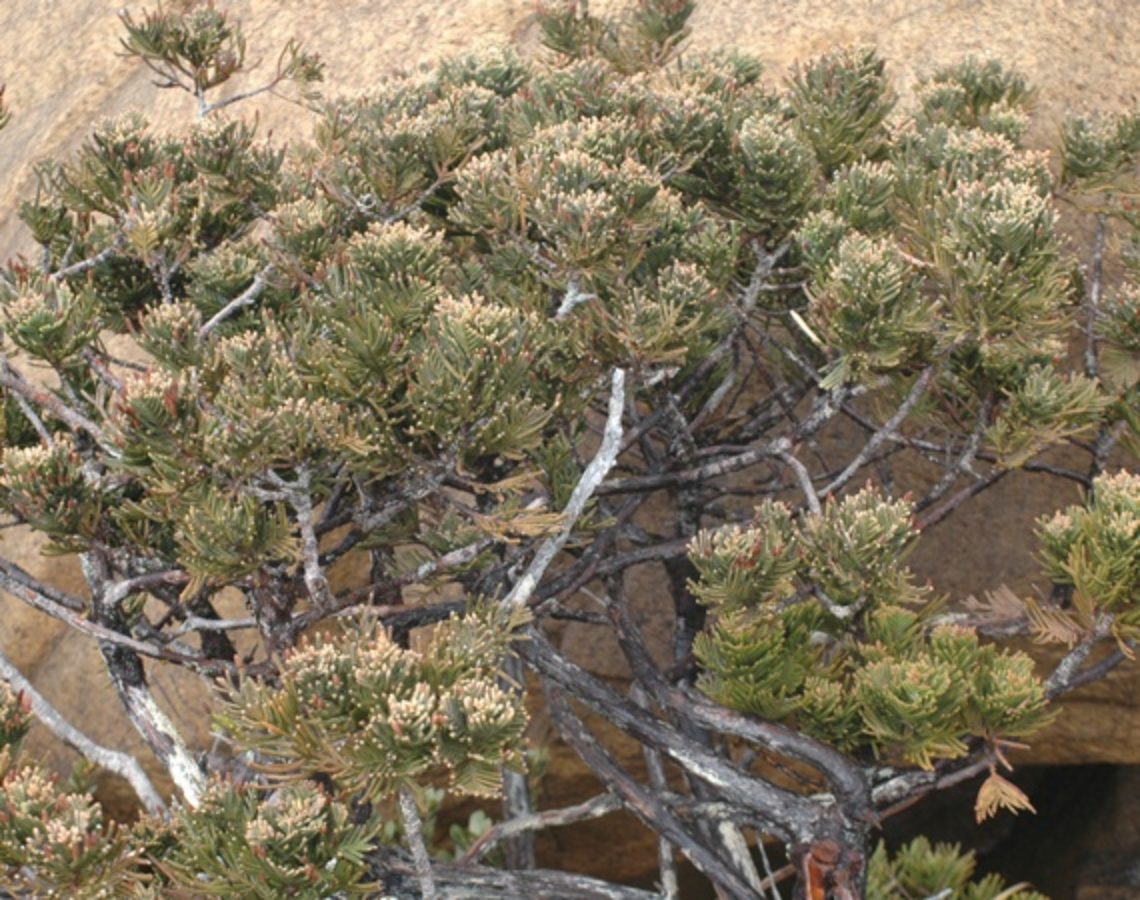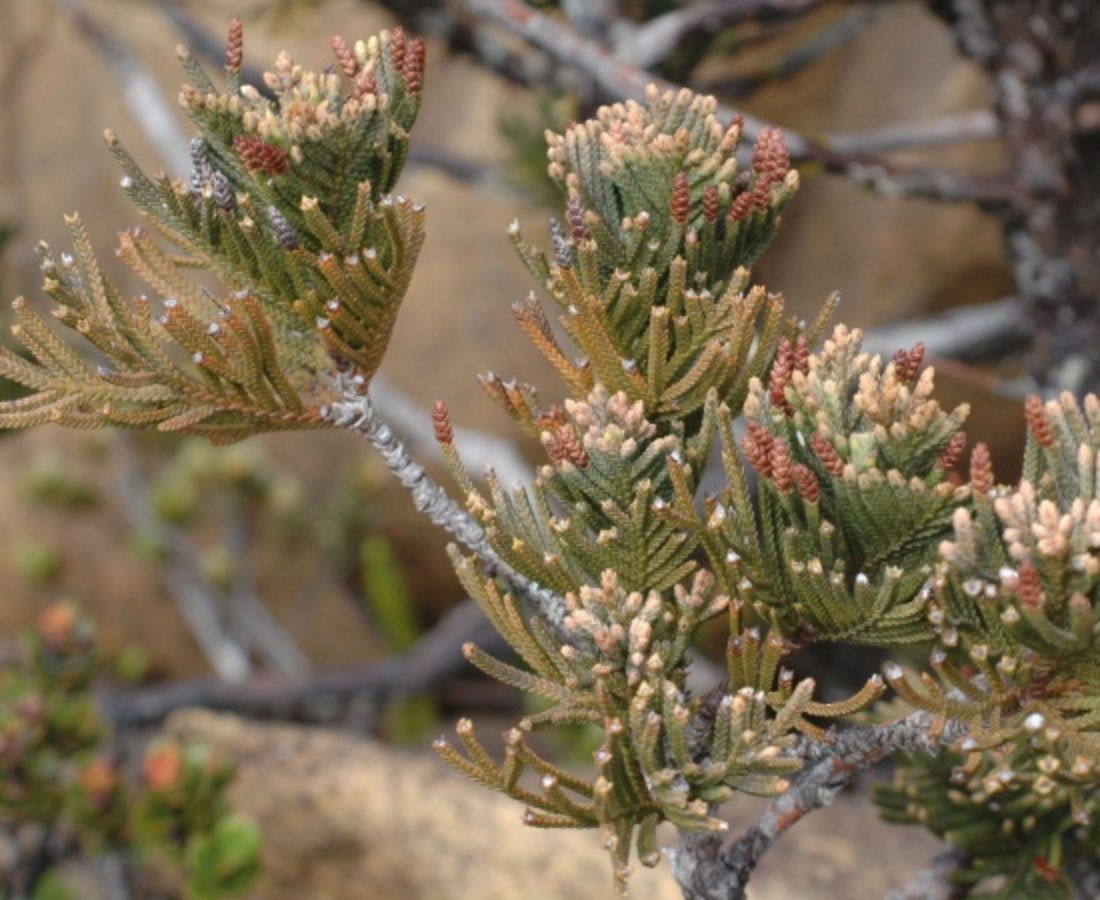Cupressaceae
Libocedrus chevalieri
One of three species of Libocedrus which is endemic to New Caledonia where it has a very narrow distribution
Description
Habit
Spreading shrub or small tree 2–5m tall, monoecious; usually multistemmed. Bark coarse and scaly, exfoliating in thin irregular strips or plates, brown. Branches many, ascending, forming a dense, bushy, often rounded crown.
Foliage
Forming dense sprays, slightly flattened, 3–4 wide. Leaves arranged in opposite pairs at right angles to those above or below with the facial (central) and laterial pairs almost equal in size, 2.5–5 x 2–2.5mm, light green, sometimes reddish brown when older.
Cones
Male pollen-cones terminal, solitary, 8–10 x 2.5–3.5mm, cylindrical, yellowish green, light brown when mature. Female seed-cones terminal, borne on branchlets with leaves of similar shape and size; bract-scales, the upper pair 10–14 x 5–7mm, the lower, smaller pair 10–12 x 3–4mm; seeds 1–-2, ovoid–oblong, flattish, apex acute, yellowish brown, with two opposite, unequal, membranous wings.
References and further reading
- de Laubenfels, D. J. (1972). Gymnospermes. In: Aubréville, A. & Leroy, J.-F. (eds.), Flore de la Nouvelle-Calédonie et Dépendances, 4. Paris: Muséum National d’Histoire Naturelle. 167 p.
- Farjon, A. (2005). A Monograph of Cupressaceae and Sciadopitys. The Royal Botanic Gardens, Kew.
- Jaffré, T., Bouchet, P. & Veillon, J.–M. (1998). Threatened plants of New Caledonia: Is the system of protected areas adequate? Biodiversity & Conservation 7(1): 36.
- Jaffré, T., Munzinger, J. & Lowry, P.P. (2010). Threats to the conifer species found on New Caledonia's ultramafic massifs and proposals for urgently needed measures to improve their protection. Biodiversity & Conservation: 19(5):1485-1502.
- Jaffré, T., Veillon, J .-M. & Cherrier, J.-F. (1987). Sur la présence de deux Cupressaceae, Neocallitropsis pancheri (Carr.) Laubenf. et Libocedrus austrocaledonica Brongn. & Gris dans le massif du Paéoua et localités nouvelles de Gymnospermes en Nouvelle-Calédonie. Bulletin de Museum de National d'Histoire naturelle Section B Adansonia 9:3 273-288.
- Thomas, P. (2010). Libocedrus chevalieri. In: IUCN 2011. IUCN Red List of Threatened Species. Version 2011.2. www.iucnredlist.org. Downloaded on 12 June 2012.







